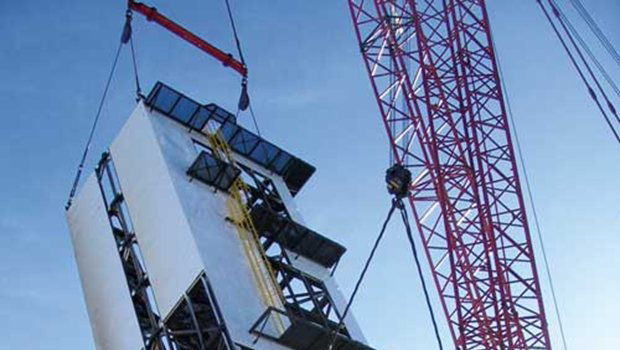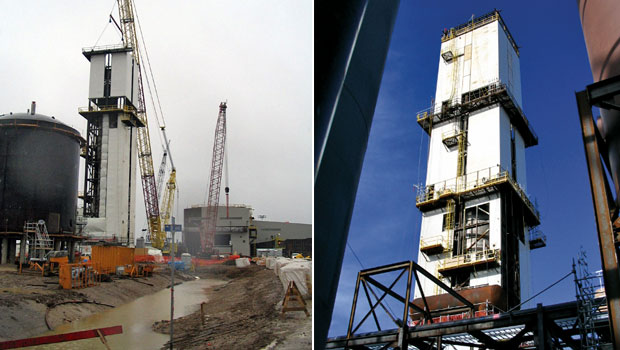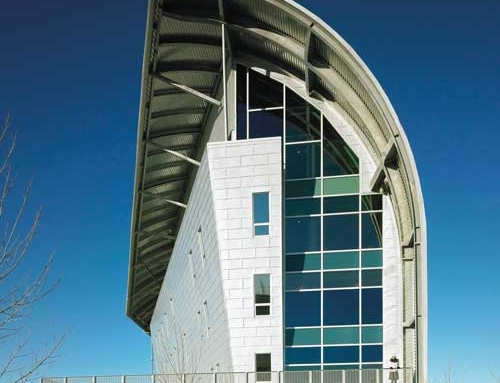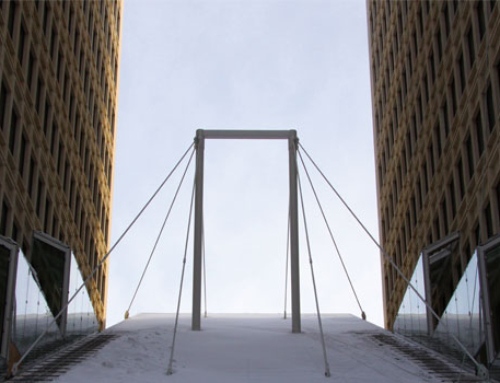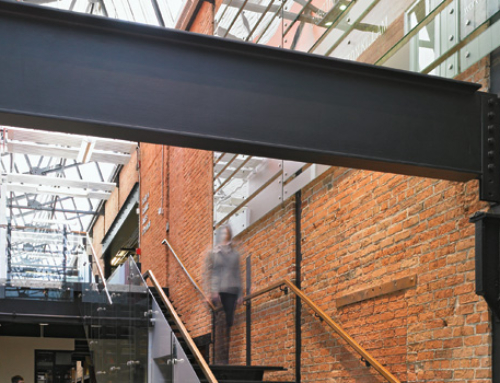Project Description
SDK of Montreal was faced with a unique challenge from Air Liquide Process and Construction: design a cold box to house the air separation unit (ASU) for a facility that would be the largest operating oxygen production unit in the world. The client was OPTI Canada Inc.; the site, Fort McMurray.
“A cold box is relatively straightforward to design for operating conditions,” says Carl Boutin, Associate with SDK and Senior Project Engineer on the ASU Cold Box project. “But putting together a cold box of this size is a completely different story. This was a big challenge for us and the client.
“We knew right away it couldn’t be shipped in one piece because of its size, and it wasn’t practical to construct on site because of weather conditions and the difficult labour situation in Fort McMurray.”
This meant the structural system had to be modular. Every module had to be small enough and light enough to meet shipping limitations, yet large enough to minimize site assembly time.
“It became obvious that a trussed steel structure was the only system that could satisfy all these criteria,” Boutin says. “We knew from experience a steel system would give us the most flexibility. As long as the interface details were planned accordingly, modules could be created by cutting the structure at specific locations into as many smaller pieces as required.”
The completed ASU cold box is an air-tight structural steel rectangular box measuring 8.5 metres by 10 metres by 64 metres high. It is made up of approximately 12,700 pieces (excluding bolts), is fully clad with fl at steel plates, and weighs about 333 tonnes.
“The erection portion of the job was the most challenging,” says Ryan Schram, Project and Drafting Coordinator with WF Welding & Overhead Cranes Ltd., fabricators on the project. “The structure was basically a giant wind sail. With a structure of that size it would have been impossible to weld at that height. All structural connections were field bolted, and the only field welding required was to attach the cladding over the splice connections.”
Originally, the cold box was designed to be assembled horizontally in two sections on site to limit scaffolding requirements and then flipped into its vertical position in one piece. But the crane needed for the task was suddenly moved off site. The structure was then cut again, creating upper, mid and lower modules. But this design created a shipping problem because each module was too wide and too high to be shipped in one horizontal piece. Longitudinal cuts were made to create 12 sub-modules with L-shaped cross sections. These L sections were then stacked in a box shape to reduce shipping costs.
The flexibility of the system proved itself during construction when the large crane needed to flip and stack the upper module had to leave the site due to scheduling issues. “We had to suddenly add another splice on the fly,” Schram says. A transverse cut created smaller modules allowing smaller cranes to perform the stacking. Boutin and Schram agree the flexibility of the steel truss system was key in making this project a success.
Project Team
Owner: Air Liquide Process & Construction
Structural Engineer: SDK et associes
Fabricator: WF Welding & Overhead Cranes Ltd.

